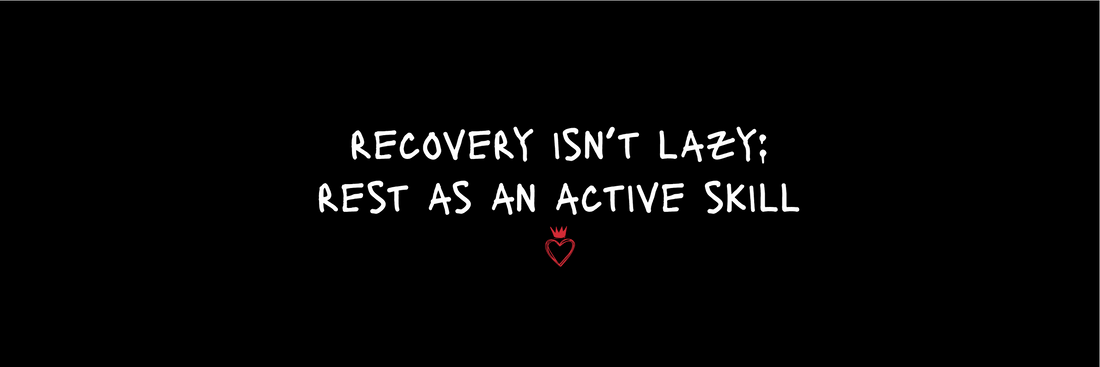Optimising Recovery to Maximise Gains & Mental Clarity
In a world that glorifies grind culture, non-stop hustle, and “no days off”, rest is often seen as weakness. But here’s the reality: Recovery isn’t lazy—it’s an active skill.
If you want to build strength, improve endurance, and stay mentally sharp, you need to recover just as hard as you train.
Let’s break down how to optimise recovery so you can keep maximising your gains without burning out.
Why Recovery is Just as Important as Training
Every time you train, lift, or push yourself through a workout, your body undergoes stress and micro-damage. Strength and endurance aren’t built during training—they’re built in recovery.
💪 Training = Stimulus (Breaks down muscle fibers)
⚡ Recovery = Growth (Repairs and strengthens)
Without proper recovery, you don’t improve—you just break down.
The 3 Pillars of Recovery
If you want to train harder, perform better, and feel stronger, your recovery game needs to be on point.
1. Sleep: The #1 Recovery Tool
😴 Sleep is where the real gains happen. During deep sleep, your body:
✅ Releases growth hormone (critical for muscle repair & fat loss)
✅ Reduces inflammation (key for preventing injuries)
✅ Restores mental focus (helps with decision-making & stress management)
🔹 How to Improve Sleep for Better Recovery:
📵 No screens 30 minutes before bed – Blue light messes with melatonin.
🌙 Keep a consistent sleep schedule – Even on weekends.
💤 7-9 hours minimum – This is non-negotiable for peak performance.
🔥 Pro Tip: Treat sleep like an extension of your training. Prioritise it the way you would a workout.
2. Nutrition: Fuel Recovery Like an Athlete
What you eat after training determines how well you bounce back.
🥩 Protein: Repairs muscle tissue. Aim for 30-40g per meal.
🥔 Carbs: Replenish glycogen. Quality matters—think rice, potatoes, or fruit.
💧 Hydration & Electrolytes: Keep your cells functioning properly.
🚀 The Recovery Meal Formula:
✅ Lean protein (chicken, steak, eggs)
✅ Complex carbs (rice, potatoes, oats)
✅ Healthy fats (avocado, nuts, olive oil)
🔥 Pro Tip: Eat within 30-60 minutes post-training to jumpstart muscle repair.
3. Active Recovery: Move, Don’t Just Sit
Recovery doesn’t mean doing nothing. Moving lightly improves blood flow, clears out metabolic waste, and keeps joints and muscles loose.
💡 Best Active Recovery Methods:
🧘 Mobility Work & Stretching – Keeps muscles flexible and injury-resistant.
🚶 Low-Intensity Cardio – Walking, cycling, or swimming improves circulation.
🩻 Foam Rolling & Massage – Breaks up muscle tension and improves recovery speed.
🔥 Pro Tip: Think of active recovery like maintenance for your body—just like a car, if you neglect it, it breaks down.
How to Know When You Need More Recovery
Your body gives warning signs when it needs more rest. Watch for:
❌ Poor performance – Strength or endurance drops.
❌ Constant soreness – Recovery feels slower than usual.
❌ Low energy/motivation – You feel drained before you even start training.
❌ Poor sleep – Struggling to get deep, quality rest.
If you’re seeing any of these signs, it’s time to dial in your recovery game.
The Recovery Mindset: Rest Without Guilt
If you struggle with the idea of taking time off, remember:
🚀 Recovery is progress. Every rest day builds strength for the next session.
⚡ Less burnout = more consistency. The athletes who recover smart outlast the ones who overtrain.
💪 Training harder isn’t always better—training smarter is.
Rest Hard, Train Harder
Optimising recovery isn’t just about feeling better—it’s about unlocking your full potential. The best athletes know that what you do outside the gym is just as important as what you do inside it.
💡 So ask yourself:
❓ Are you recovering as hard as you’re training?
❓ Is your sleep, nutrition, and mobility dialed in?
❓ Are you allowing your body to adapt, grow, and come back stronger?
The most successful people aren’t the ones who never rest. They’re the ones who know when to push and when to pull back.
🔥 Your Next Move?
✅ Prioritise sleep, nutrition, and movement every day.
✅ Track how your body responds to recovery changes.
✅ Commit to training smarter—not just harder.




